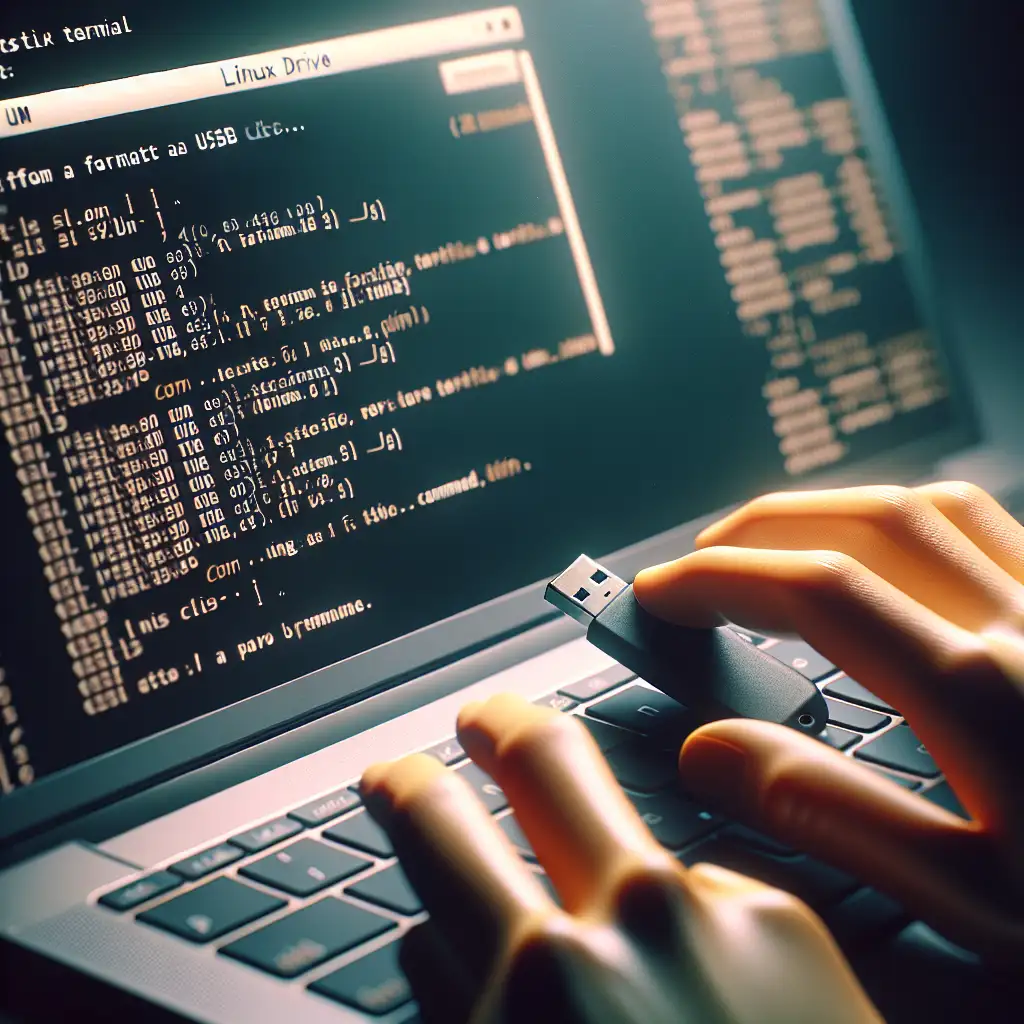Mastering USB Pendrive Formatting in Linux: A Step-by-Step Guide Using Command Line Tools
Forget GUI tools that often complicate simple tasks; this guide strips down pendrive formatting to its essentials using Linux command line, offering precision and control only a terminal can provide.
If you're a tech enthusiast or IT professional, you know that properly formatting a USB pendrive is essential for ensuring compatibility across devices, maintaining data integrity, and optimizing storage. While graphical interfaces can be helpful, they sometimes add unnecessary layers of complexity or fail to offer the control you need. The Linux command line, on the other hand, offers powerful and straightforward tools to format your pendrive quickly and reliably.
In this guide, we’ll walk through the entire process, explaining each step so you not only get your pendrive formatted correctly but also deepen your understanding of what's happening behind the scenes.
Why Format a USB Pendrive via Command Line?
- Precision: Select exact filesystem types and allocation sizes.
- Reliability: Fewer moving parts mean less chance of errors compared to some graphical tools.
- Speed: Quick commands get your drive ready faster.
- Flexibility: Format for different environments: Windows-compatible FAT32/exFAT, Linux-native ext4, or NTFS.
Step 1: Identify Your Pendrive
Before formatting, confirm which device node corresponds to your USB drive.
Plug in your pendrive and run:
lsblk
Example output:
NAME MAJ:MIN RM SIZE RO TYPE MOUNTPOINT
sda 8:0 0 500G 0 disk
├─sda1 8:1 0 100G 0 part /
├─sda2 8:2 0 400G 0 part /home
sdb 8:16 1 16G 0 disk
└─sdb1 8:17 1 16G 0 part /media/user/usbdrive
Here, /dev/sdb is the USB pendrive (often with RM = removable). Be very careful to pick the correct device so you don't overwrite another disk.
Step 2: Unmount the Pendrive
If it is mounted (as in above example /media/user/usbdrive), unmount it before formatting:
sudo umount /dev/sdb1
If there are multiple partitions (e.g., sdb1, sdb2), unmount all of them.
Step 3: Erase Existing Partition Table (Optional but Recommended)
This step wipes any existing partition table or data structure:
sudo dd if=/dev/zero of=/dev/sdb bs=512 count=1
Warning: This destroys data on the device. Replace /dev/sdb with your drive!
Alternatively, you can skip zeroing and just overwrite partitions.
Step 4: Create a New Partition Table
Use fdisk, parted, or cfdisk. Here we use fdisk for MBR partition table:
sudo fdisk /dev/sdb
In fdisk interactive prompt:
- Type
o+ Enter — create a new empty DOS partition table. - Type
n+ Enter — add a new partition. - Select
pfor primary. - Press Enter to accept default partition number (usually
1). - Press Enter twice to accept default first and last sector (full size).
- Type
t+ Enter — change partition type. - Type
b+ Enter — set type to W95 FAT32 (for broad compatibility). - Type
w+ Enter — write changes and exit.
You can also create GPT partition tables if needed by typing g instead of o.
Step 5: Format the Partition with Desired Filesystem
Format the newly created partition:
For FAT32 (Widely compatible):
sudo mkfs.vfat -F32 /dev/sdb1
For exFAT (Good for files >4GB):
First install utilities if missing:
sudo apt install exfat-utils # Debian/Ubuntu
sudo yum install exfat-utils # CentOS/RHEL
Then format:
sudo mkfs.exfat /dev/sdb1
For NTFS (Windows-friendly but heavier):
sudo mkfs.ntfs -f /dev/sdb1
For ext4 (Linux-native filesystem):
sudo mkfs.ext4 /dev/sdb1
Step 6: Verify Formatting
After formatting, confirm filesystem info with:
lsblk -f /dev/sdb1
Example output:
NAME FSTYPE LABEL UUID MOUNTPOINT
sdb1 vfat A1B2-C3D4
Alternatively,
file -s /dev/sdb1
Bonus Tip: Label Your USB Drive
Use the appropriate label tool depending on filesystem:
- For FAT32/exFAT:
sudo dosfslabel /dev/sdb1 MyUSBDrive
# or exfatlabel for exFAT drives:
sudo exfatlabel /dev/sdb1 MyUSBDrive
- For ext4:
sudo e2label /dev/sdb1 MyLinuxUSB
Summary Cheat Sheet
| Task | Command |
|---|---|
| Identify device | lsblk |
| Unmount device | sudo umount /dev/sdXn |
| Zero first sectors | sudo dd if=/dev/zero of=/dev/sdX bs=512 count=1 |
| Start fdisk | sudo fdisk /dev/sdX |
| Format FAT32 | sudo mkfs.vfat -F32 /dev/sdXn |
| Format exFAT | sudo mkfs.exfat /dev/sdXn |
| Format NTFS | sudo mkfs.ntfs -f /dev/sdXn |
| Format ext4 | sudo mkfs.ext4 /dev/sdXn |
Replace /dev/sdXn with your actual device and partition.
Final Words
Mastering these command line tools gives you ultimate power over USB pendrives on Linux. No more dependency on flaky GUI apps or guesswork—just clear steps with reliable tools. Whether prepping drives for backups, installations, or sharing files across platforms, this knowledge is a must-have in your Linux toolkit.
Happy formatting! 🚀
If you found this guide useful or want me to cover related topics like mounting/unmounting drives or creating bootable USBs via command line, let me know in the comments!
